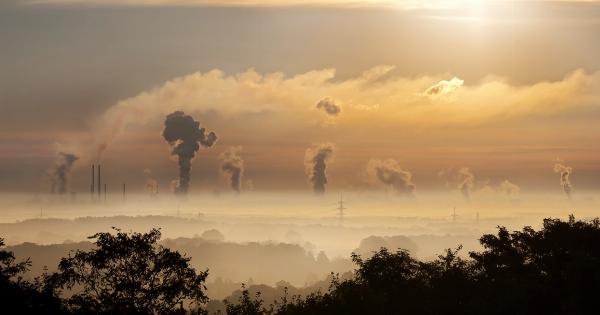Environmental degradation is the deterioration of the environment through the depletion of natural resources such as air, water, and soil.
This phenomenon is caused by the exploitation of these resources in an unsustainable manner, and it poses a significant threat to humanity. Environmental degradation is an issue that has gained increasing attention in recent years as the negative consequences of this phenomenon continue to manifest themselves in various ways.
Causes of Environmental Degradation
There are various causes of environmental degradation, which include:.
1. Industrialization
The growth of industrialization has led to an increase in pollution and environmental degradation.
This is because the production of goods and services generated by industries results in the release of harmful chemicals such as carbon dioxide, sulfur dioxide, and other toxic gases into the atmosphere.
2. Deforestation
The depletion of forests has far-reaching consequences for the environment. Trees play a vital role in the ecosystem by absorbing carbon dioxide and other harmful gases from the atmosphere.
Deforestation, therefore, leads to an increase in the concentration of these gases in the atmosphere, contributing to global warming and the greenhouse effect.
3. Climate Change
Climate change is a significant cause of environmental degradation. Global warming, which is caused by the increase in the concentration of greenhouse gases in the atmosphere, has far-reaching effects on the environment.
These effects include rising sea levels, flooding, droughts, and more frequent and severe weather events such as hurricanes, cyclones, and typhoons.
4. Overfishing
Overfishing is another cause of environmental degradation. The depletion of fish stocks in the oceans has far-reaching consequences for the ecosystem.
This includes the destruction of coral reefs, threatened marine species, and the overall health of the ocean ecosystem.
5. Mining
Mining activities also contribute to environmental degradation. Mining operations generate various types of waste that contaminate the surrounding environment.
This waste can include toxic chemicals, heavy metals, and other harmful substances that can have long-term environmental impacts.
The Consequences of Environmental Degradation
Environmental degradation has far-reaching consequences for the environment and humanity. These consequences include:.
1. Climate Change
Climate change is one of the most significant consequences of environmental degradation.
Global warming has far-reaching effects on the environment, including the melting of polar ice caps, the rising of sea levels, and the endangerment of coastal communities.
2. Loss of Biodiversity
Environmental degradation also leads to the loss of biodiversity.
The destruction of habitats, the depletion of natural resources, and the pollution of the environment lead to the extinction of species, the degradation of ecosystems, and the loss of biological diversity.
3. Health Risks
Environmental degradation also poses significant risks to human health. Pollution of the air and water can lead to respiratory illnesses, cancer, and other health problems.
The depletion of natural resources can lead to food and water shortages, resulting in malnutrition and hunger.
4. Economic Consequences
Environmental degradation has significant economic consequences. The depletion of natural resources, the loss of biodiversity, and the pollution of the environment can lead to economic instability and reduce the outputs of agriculture and fisheries.
There is also a high cost of cleaning up pollution and rehabilitating damaged ecosystems.
Solutions to Environmental Degradation
To address environmental degradation, various solutions need to be employed. These solutions include:.
1. Sustainable Resource Management
One of the most effective ways to address environmental degradation is the sustainable management of natural resources.
This includes reducing carbon emissions, conserving forests, and oceans, improving agricultural practices, and implementing measures to reduce waste.
2. Investments in Clean Energy
Another way to address environmental degradation is to invest in clean energy. Renewable energy sources such as solar, wind, and hydroelectric power can reduce carbon emissions and help address climate change.
3. Conservation of Biodiversity
Conserving biodiversity is another important way to address environmental degradation. This involves protecting endangered species and ecosystems and restoring degraded habitats.
4. Sustainable Agriculture
Sustainable agriculture practices can also help address environmental degradation. This includes the use of organic fertilizers, crop rotation, and the sustainable use of water resources.
5. Pollution Control Measures
Finally, implementing pollution control measures can help address environmental degradation. This includes strict regulations on industrial emissions, the enforcement of waste management programs, and regulating mining operations.
Conclusion
Environmental degradation is a significant threat to humanity and the environment.
To address this issue, various solutions need to be employed to reduce the exploitation of natural resources, mitigate climate change, conserve biodiversity, adopt sustainable agriculture practices, and implement pollution control measures. It is imperative that governments, businesses, and individuals take action to address environmental degradation for the sake of the planet and future generations.






























